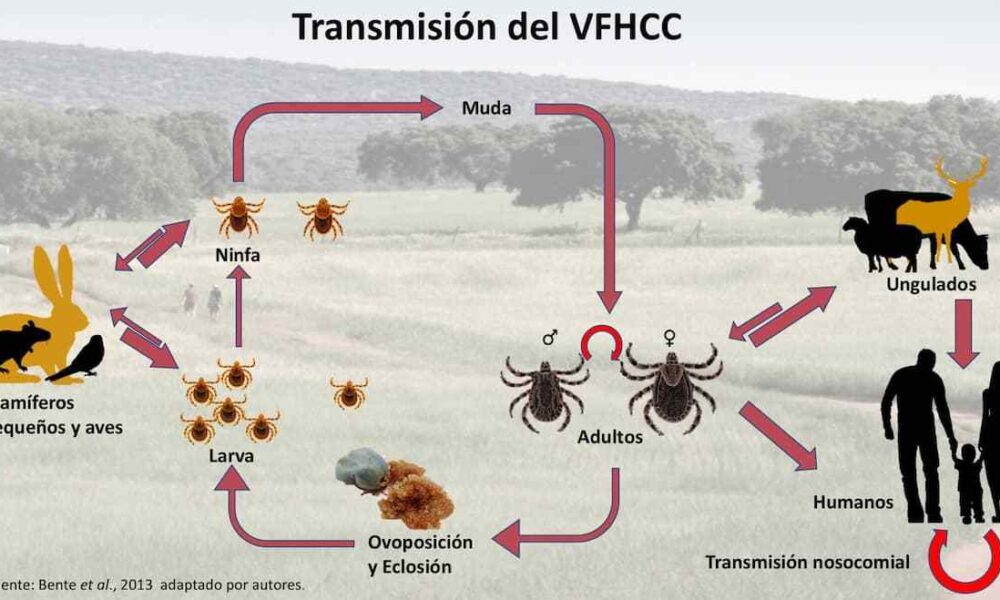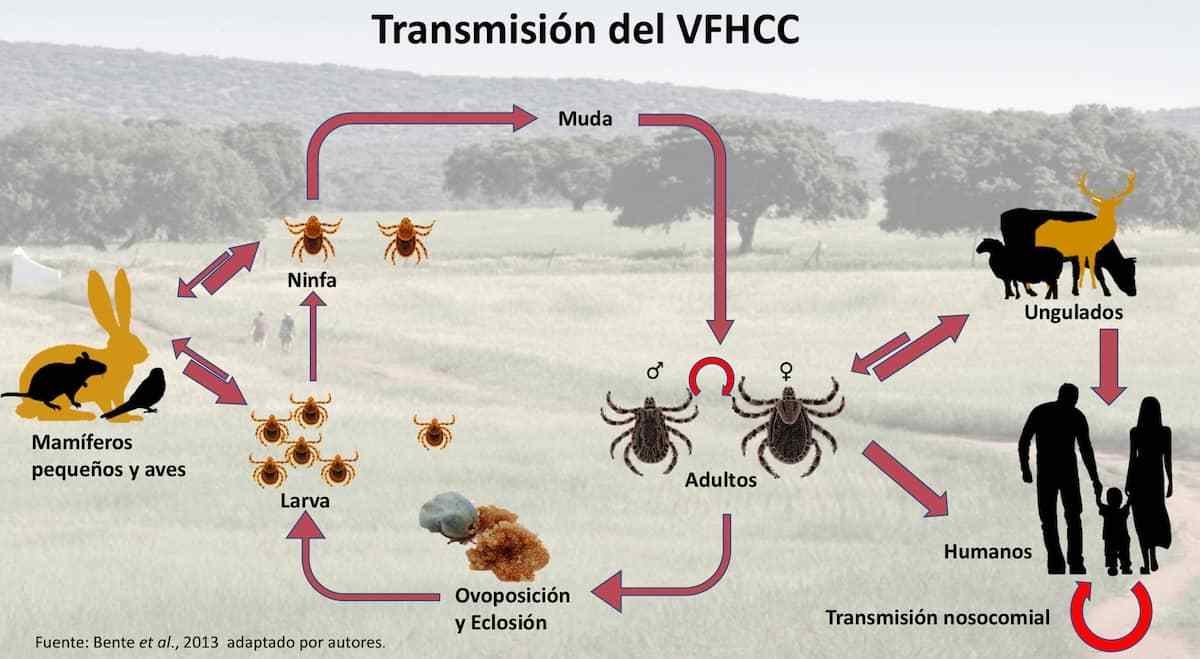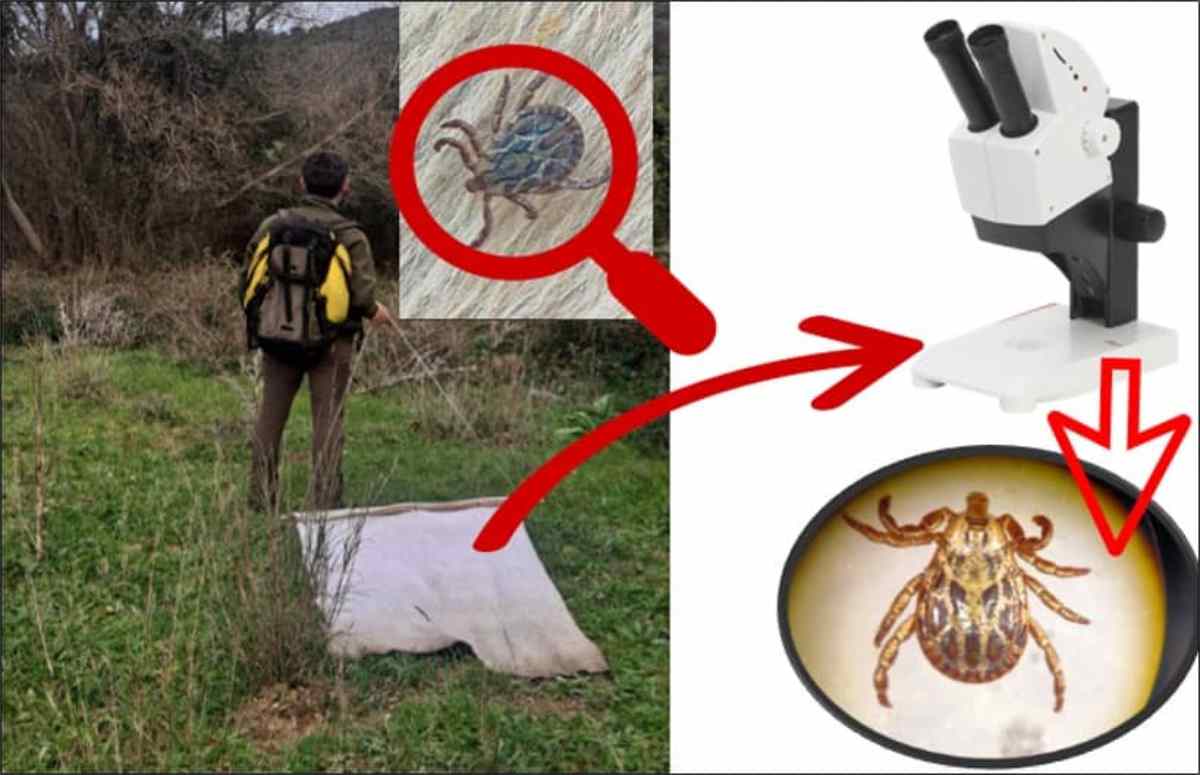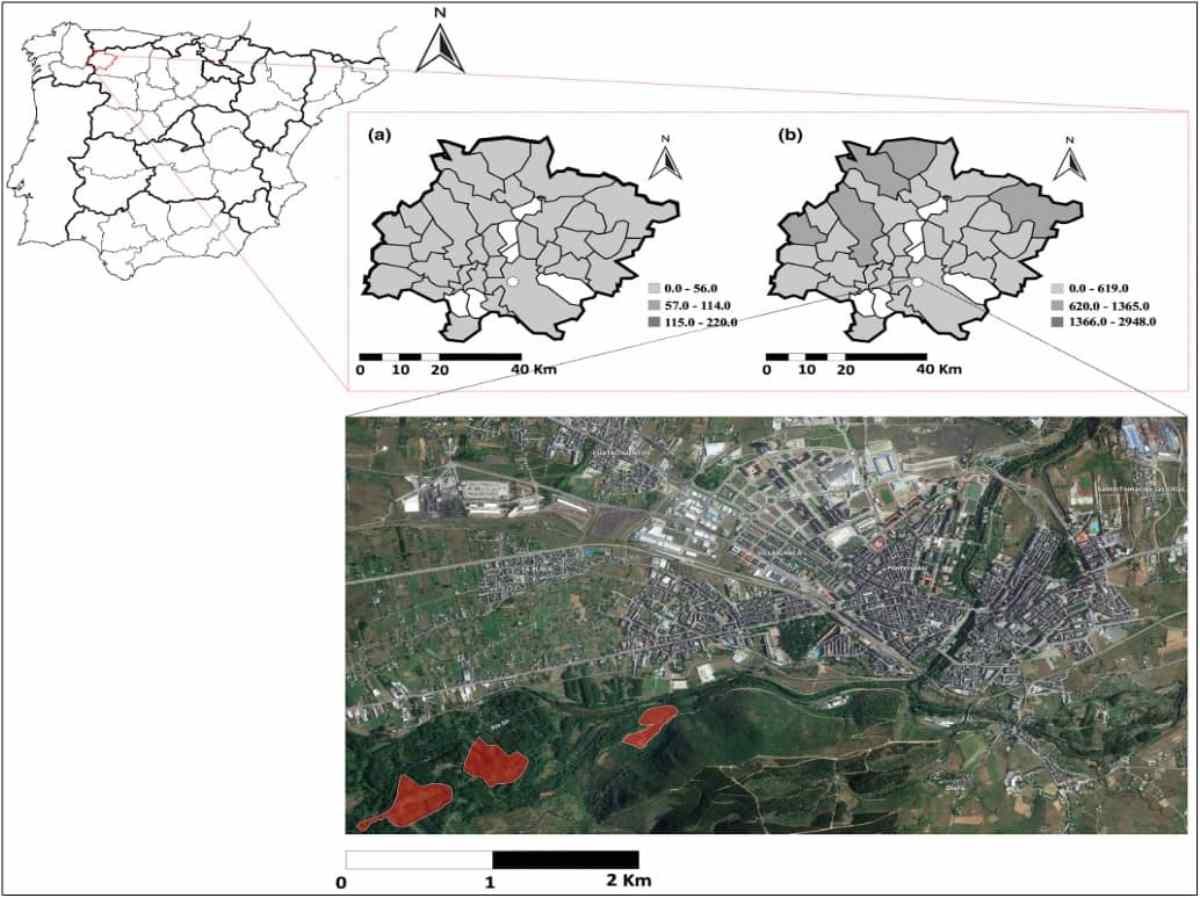IREC detected Crimean-Congo hemorrhagic fever virus in ticks from the suburban area of Ponferrada.

According to the study, Crimean-Congo hemorrhagic fever virus was detected in 10 out of 95 ticks analyzed. In Bierzo, three cases and one death were reported in 2021.

SOURCE: IREK
Crimean-Congo hemorrhagic fever (CCHF) is one of the human viral diseases of greatest concern to the World Health Organization due to its high mortality rate, lack of effective vaccines, ability to be transmitted from person to person, and the enormous ability of the virus to mutate. it causes it. Crimean-Congo hemorrhagic fever (CCHF) emerged unexpectedly in people in northwestern Spain in 2021, with a case associated with a tick bite on the outskirts of the town where the patient lived (Ponferrada), and two more cases were reported in 2022. in the region, with the tragic result of the death of a 51-year-old forest agent. Moreover, since 2013, 13 cases of CCHF have been confirmed in Spain.

Sampling method (drag: dragging a blanket through vegetation)
Following the notification in 2021 of the first case of CCHF in humans, which occurred in the Bierzo region, researchers from the Health and Biotechnology Research Group (SaBio) of the Game Resources Research Institute (IREC – CSIC, UCLM, JCCM) began a study to determine whether it was circulating there is a virus of Crimean-Congo hemorrhagic fever in ticks on the outskirts of the city of Ponferrada. To this end, a 30-kilometer walking tour was carried out around the outskirts of Ponferrada, where ticks were collected using cotton blankets to identify the species involved in local transmission of the virus.
In addition, traces of wild ungulates, important tick hosts, were detected during sampling, and the potential presence of H. marginatum was assessed based on farm and cattle densities. Collected ticks were transported to the laboratory for morphological identification and RNA analysis to assess virus prevalence.

Using PCR and sequencing, 10 of 95 ticks analyzed (10.5%; CI: 5.2-18.5) were found to be infected with Crimean-Congo hemorrhagic fever virus, possibly one of the highest infection rates , ever registered in a free state. -live ticks looking for food. In the Iberian Peninsula, ticks of the species Hyalomma lusitanicum and Hyalomma marginatum are the main vectors of this virus, so it was surprising that none of the ticks that tested positive were from the genus Hyalomma.
However, the limited study area may have missed areas that were highly favorable for Hyalomma spp. in the region, so it cannot be ruled out that they may have played a role in the cases of Crimean-Congo hemorrhagic fever among people reported in Bierzo. Thus, the results of this new scenario suggest the need to consider that Crimean-Congo hemorrhagic fever virus may indeed be spreading into northwestern Spain, and to urgently understand the possible role of non-Hyalomma spp. ticks. in the ecological and epidemiological dynamics of the virus. This would make it possible to assess the ability of the CCHF virus to be transmitted between different types of ticks and to accurately predict risk areas for the emergence of Crimean-Congo hemorrhagic disease in our country.
About IREK
The Institute for Research on Game Resources (IREC) was created on February 24, 1999, through a special agreement between the Higher Council for Scientific Research (CSIC), the University of Castilla-La Mancha (UCLM) and the Regional Government of Castile. La Mancha (JCCM). Thus, it is a joint institute in which these three institutions are jointly owned, which are represented on the governing bodies of the Institute through the Management Committee, whose function is to support IREC to other institutions and organizations to obtain what is needed for the better functioning and promotion of the Institute.